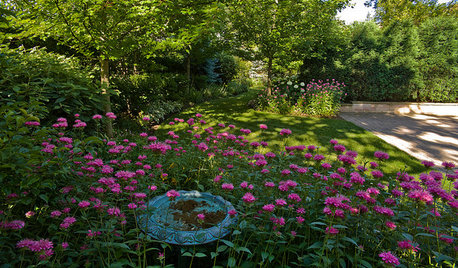Weeds and Fire Ants
Asian
12 years ago
Related Stories

EDIBLE GARDENSNatural Ways to Get Rid of Weeds in Your Garden
Use these techniques to help prevent the spread of weeds and to learn about your soil
Full Story
GARDENING GUIDES5 Ways to Naturally Win the Weed War
Show irksome weeds no mercy with these tricks for combating them sans chemicals
Full Story
GARDENING GUIDES5 Weed-Smothering Ground Covers
Let these landscape plants do the dirty work of choking out weeds while you sit back and enjoy the view
Full Story
HOUZZ TOURSHouzz Tour: From Overgrown Weeds to Picturesque Farmhouse Expanse
This once-neglected 100-acre South Carolina site now features a lake, a wood-filled farmhouse and a far-reaching view
Full Story
GARDENING AND LANDSCAPINGBid Bad Garden Bugs Goodbye and Usher In the Good
Give ants their marching orders and send mosquitoes moseying, while creating a garden that draws pollinators and helpful eaters
Full Story
PATIO OF THE WEEKWater and Fire Mingle in a Canadian Front Yard
If the illuminated moat winding through this Ontario patio doesn't dazzle you, the 8-foot-wide fireplace will
Full Story
GARDENING FOR BUTTERFLIES3 Ways Native Plants Make Gardening So Much Better
You probably know about the lower maintenance. But native plants' other benefits go far beyond a little less watering and weeding
Full Story
GARDENING GUIDES7 Ecofriendly Gardening Ideas That Also Cut Chore Time
Spend less time weeding, less money watering and more moments just sitting back and enjoying your healthy garden
Full Story
LANDSCAPE DESIGNExuberant Self-Seeders for Gorgeous, Easy-Care Gardens
Keep weeds down, color high and maintenance low with beautful plants that sow themselves
Full Story
BATHROOM DESIGNDreaming of a Fireside Soak
You could relax by the fire while taking a bath in one of these cozy spaces
Full StorySponsored
Your Custom Bath Designers & Remodelers in Columbus I 10X Best Houzz
More Discussions







goren
dchall_san_antonio
Related Professionals
Birmingham Landscape Architects & Landscape Designers · Havre de Grace Landscape Architects & Landscape Designers · Waunakee Landscape Architects & Landscape Designers · Pelham Landscape Contractors · Duarte Landscape Contractors · Gaithersburg Landscape Contractors · Huntington Landscape Contractors · Live Oak Landscape Contractors · Mashpee Landscape Contractors · Middle River Landscape Contractors · Ramsey Landscape Contractors · Northlake Landscape Contractors · Placerville Swimming Pool Builders · Roseville Swimming Pool Builders · Santa Paula Swimming Pool BuildersZoysiaSod
AsianOriginal Author
ZoysiaSod
dchall_san_antonio
AsianOriginal Author
dchall_san_antonio
AsianOriginal Author
dchall_san_antonio
AsianOriginal Author
dchall_san_antonio
AsianOriginal Author
ZoysiaSod
dchall_san_antonio
ZoysiaSod
dchall_san_antonio
ZoysiaSod
dchall_san_antonio
dchall_san_antonio